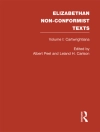Practicing shame investigates how the literature of medieval England encouraged women to safeguard their honour by cultivating hypervigilance against the possibility of sexual shame. A combination of inward reflection and outward comportment, this practice of ‘shamefastness’ was believed to reinforce women’s chastity of mind and body, and to communicate that chastity to others by means of conventional gestures. The book uncovers the paradoxes and complications that emerged from these emotional practices, as well as the ways in which they were satirised and reappropriated by male authors. Working at the intersection of literary studies, gender studies and the history of emotions, it transforms our understanding of the ethical construction of femininity in the past and provides a new framework for thinking about honourable womanhood now and in the years to come.
Table des matières
Introduction
1 Show and tell: shame and the subject of women’s bodies
2 Lessons in shame
3 Shame under suspicion, shame under siege
4 Death or dishonour: the problem of exemplary shame
5 Shamefast Hoccleve and shameless craving
Afterword
Bibliography
Index
A propos de l’auteur
Dr Anke Bernau is Lecturer in Medieval Literature and Culture at the University of Manchester












